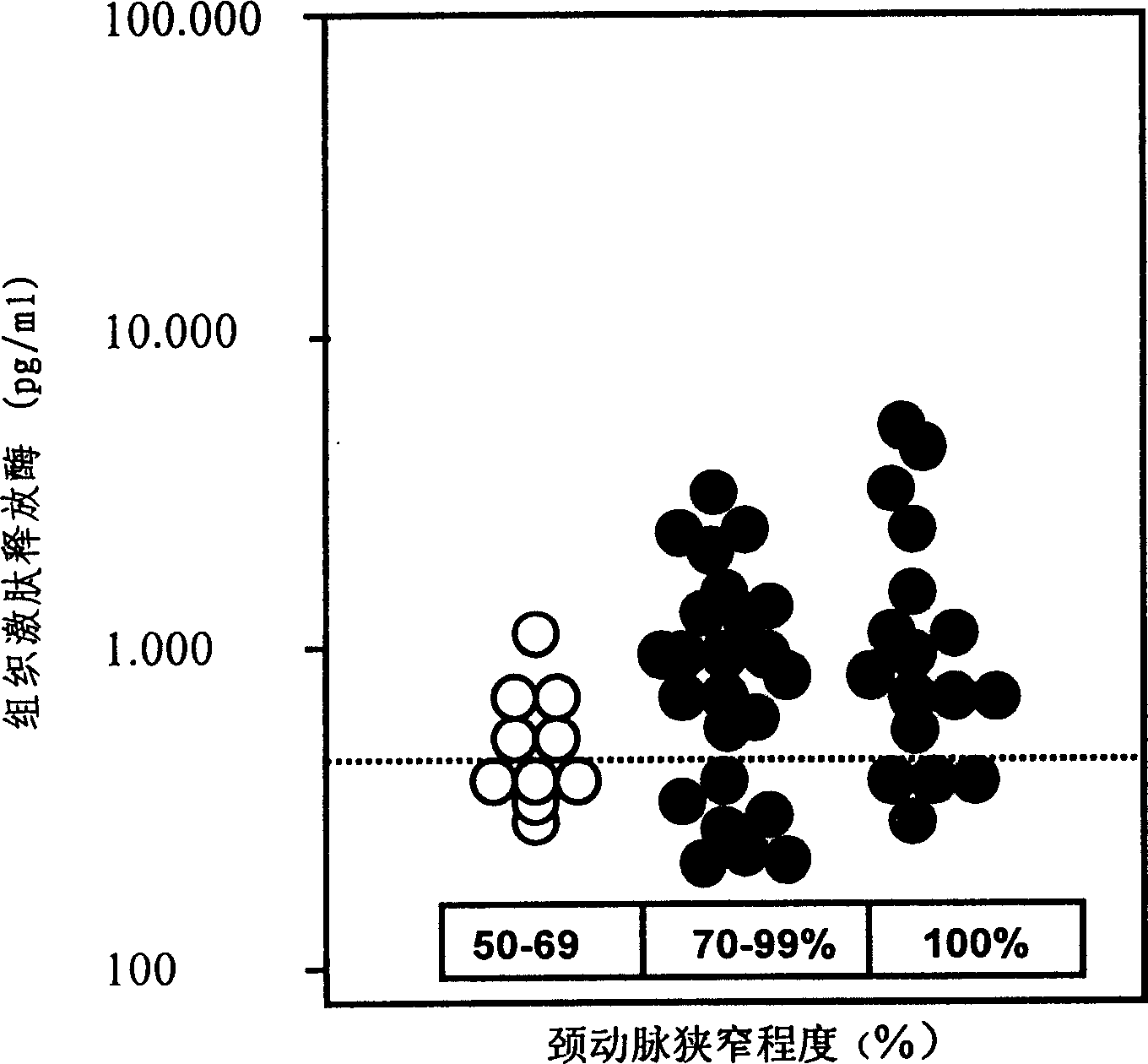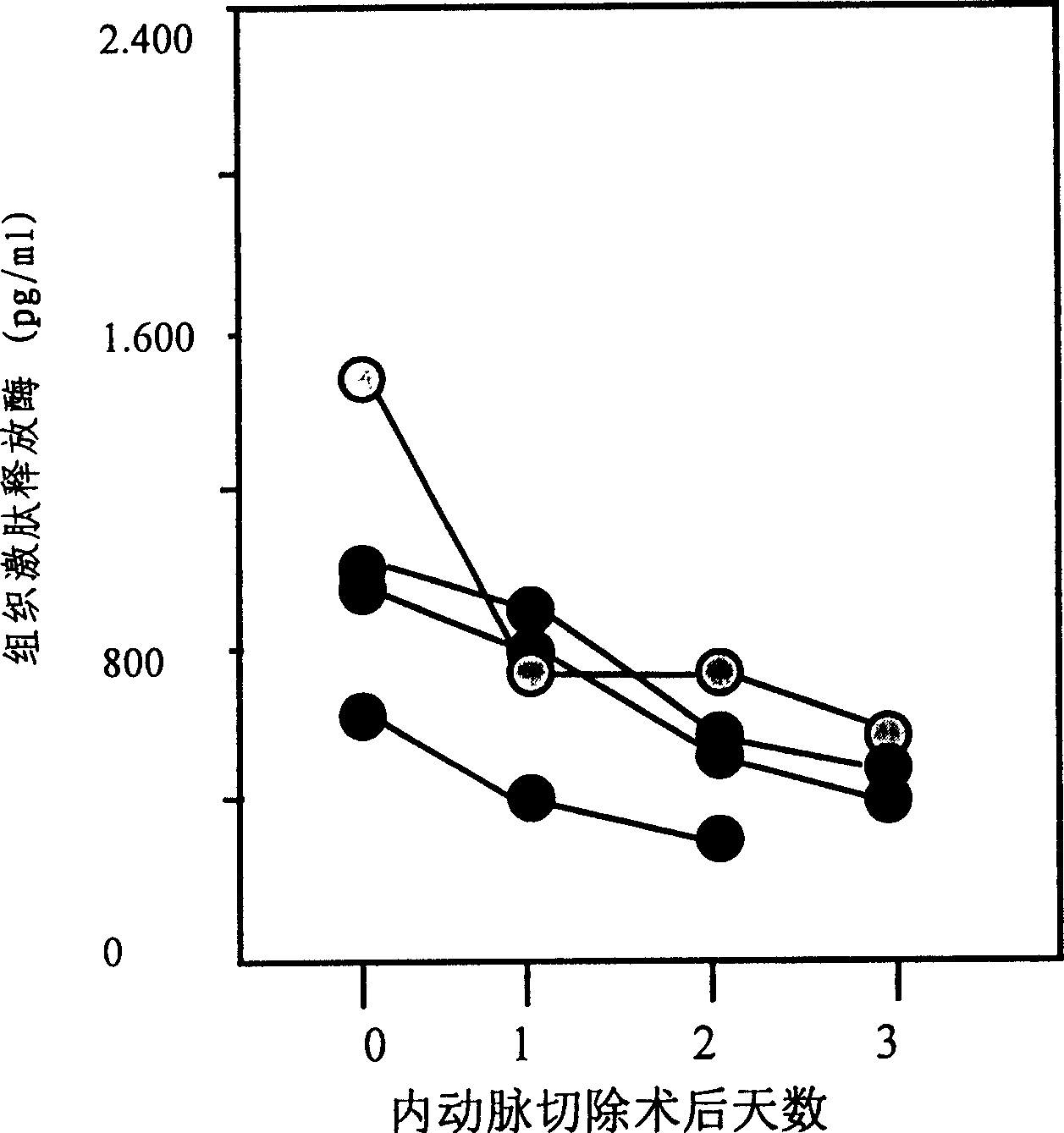Detection method for human tissue kallikrein in body fluid and its use
A technology of kallikrein and assay method, applied in the field of diagnosis of cerebral ischemia, can solve the problems of chronic ischemia, not obvious surgical indications, unsuitable for general screening of risk groups of stroke, etc., and achieve low detection cost Effect
- Summary
- Abstract
- Description
- Claims
- Application Information
AI Technical Summary
Problems solved by technology
Method used
Image
Examples
Embodiment 1
[0033] Purification of tissue kallikrein from human urine
[0034]Tissue kallikrein can be extracted from human urine by affinity chromatography (Shimamoto K., Chao, J., Margolius H.S. (1980). J. Clin. Endocinology and Metabolism, 51:840-848). Collect 12 liters of urine and concentrate it to 300 ml by ultrafiltration, and store it at -20 degrees. Repeated freezing and thawing, filtered through three layers of gauze and Nitex membrane, centrifuged at 5000g for 30 minutes, the precipitate was salted out with 35-80% ammonium sulfate, collected by centrifugation, redissolved and dialyzed, the dialysate passed through DE-52 cellulose chromatography column, Elute with 0.1-0.5M sodium chloride-0.1M phosphate buffer (pH 6.5), collect the elution peak with Tos-Arg-Ome esterase activity, for 0.2M sodium chloride-0.1M phosphate buffer (pH6.5) for dialysis, the dialysate is passed through the agarose gel affinity column with aprotinin as the ligand, eluted with the dialysis buffer until ...
PUM
 Login to View More
Login to View More Abstract
Description
Claims
Application Information
 Login to View More
Login to View More - R&D
- Intellectual Property
- Life Sciences
- Materials
- Tech Scout
- Unparalleled Data Quality
- Higher Quality Content
- 60% Fewer Hallucinations
Browse by: Latest US Patents, China's latest patents, Technical Efficacy Thesaurus, Application Domain, Technology Topic, Popular Technical Reports.
© 2025 PatSnap. All rights reserved.Legal|Privacy policy|Modern Slavery Act Transparency Statement|Sitemap|About US| Contact US: help@patsnap.com



